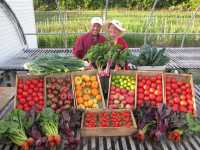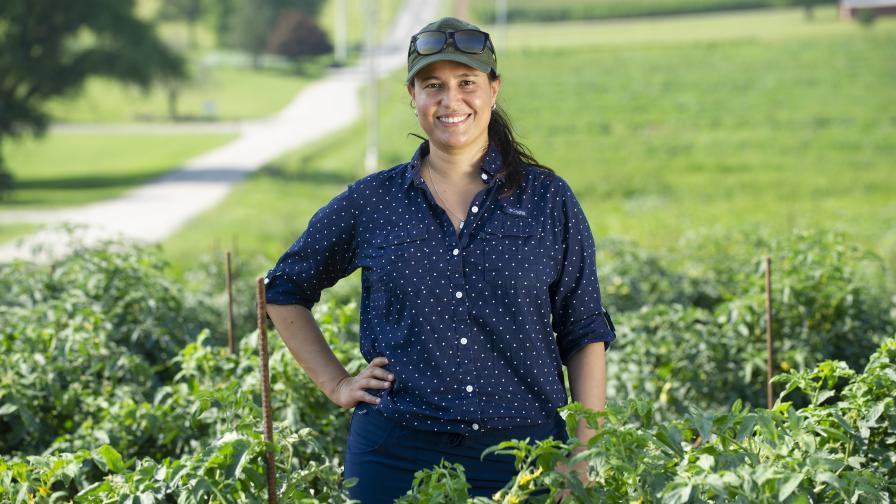Food Safety Starts With Your Manual

It has been nearly three years since the Food Safety Modernization Act (FSMA) was signed into law. The new Produce Safety Rule is announced and currently up for comment. All signs point to a new day when it comes to food safety regulation and practices.
Larger farms are fairly well positioned for new regulations, as most have been subject to the requirements of their wholesale and retail buyers. Larger farms are equipped for third-party audits and many have dedicated staff to manage food safety protocols.
For the smaller and mid-sized grower, food safety rules and regulations might seem more daunting, but they are no less important. There are plenty of farmers who fall into this category. USDA defines a small farm as one having annual gross sales less than $250,000. According to the 2007 Census of Agriculture, 93% of farms in Florida fall into this category.
For the smaller grower concerned about food safety, there is help available. The starting point is building a food safety manual and conducting a self-audit of the farm. And, no growers should consider themselves exempt, regardless of size.
“I don’t like to use the word exemption when talking about food safety,” says Bob Hochmuth, a multicounty UF/IFAS Extension agent based in Live Oak. “It’s misleading because even if a grower is small enough to have some exceptions to the rules, everyone needs to be working under good food safety practices.”
Hochmuth and colleagues from the University of Florida have been helping growers prepare food safety manuals for their farms for the past four years at day-long workshops thanks to specialty crop block grant funding from the Florida Department of Agriculture. “All growers who sell products to the consuming public need to have a plan to assure the food has been handled in a safe fashion to reduce risks,” says Hochmuth. “The plan itself helps all growers take a systematic look at their operations and see where improvements can be made. Most growers of all sizes are doing many things to reduce foodborne illnesses, but all have areas for improvement too.”
Hochmuth likens the workshop on building a food safety manual to laying the foundation of a house. “Building a food safety manual and program is pretty daunting,” he says. “What we have tried to do with our training process is to take some of that away. By the time a grower goes through the class, our goal is he or she is confident it can be done with the tools we provide them.”
One Section At Time
Food safety manuals have several sections that allow growers to approach good agricultural practices in a systematic way. The final manual is required to be in a reviewable paper document. However, there are online forms and programs available to help growers organize the manual, which then can be printed out as the final document. The training conducted by UF/IFAS utilizes the online form provided by Primus Labs (PrimusLabs.com).
“The manual building process forces the grower to think about the farm in its entirety,” says Hochmuth. “But, the manual develops an organizational structure, standard operating procedures (SOPs), and logs (documentation). The grower will need to develop these SOPs, logs, and records. So, well water sample reports, pesticide application records, fertilizer records, employee hand washing and hygiene requirements, records of employee training, etc. all will need to be documented.”
Hochmuth stresses that thorough documentation is a huge part of any food safety program. As the regulators say, “If you didn’t write it down, you didn’t do it.”
The first section of the manual falls under General Information. This introductory element covers items like what crops are grown on how many acres, water sources on each farm, who the grower purchases inputs from, and to whom he or she sells and ships to.
“General information just helps the grower think of the farm in the context of food safety and how it will be organized,” says Hochmuth. “Early on, you’ll see the importance of water in this process because you’ll be asked about the sources of water used for your irrigation and cleaning.”
Food Safety: One Section At A Time
Site Selection comes next and it covers items like livestock on the farm, non-farm activities such as landfills, mines, and disposal of industrial chemicals. Adjacent Land Use is the manual’s next section, and it focuses on what is happening on neighboring property. It asks similar questions as site selection and takes into account items like pesticide drift, the storage and application of organic fertilizers or composting, and other industrial uses.
“Site selection and adjacent land use begins to bring the notion of livestock and its waste into consideration,” says Hochmuth. “The animal piece is a huge part of the food safety puzzle. If you have a mixed operation of both crops and livestock, those need to be clearly separated.
“The same goes with a neighbor who has cattle on the other side of the fence. Is that pasture higher than my watermelon field and will a heavy leaching rain wash manure into my field? Is the neighbor spreading manure on a windy day and can it blow into my field? Those are the types of questions you need to ask. And, of course, the days of taking your dog for a ride through the field are over.”
Animal waste is an area where an automatic failure can be delivered during an audit process. For example, the auditor finds untreated manure from a domestic animal in a field — that’s a fail. “You can be perfect on everything else, but still fail because of this one thing,” says Hochmuth. “In our training, we really hit the automatic failure aspect hard. Most times, these come from animal waste and pesticide issues.”
The next section focuses on Fertilizer Usage and the application of untreated or treated manures, the use of biosolids, and synthetic fertilizers. “If you are using untreated manure as fertilizer, it can be a big problem,” says Hochmuth. “It can be applied, but it must be applied 90 or 120 days before the crop is harvested (90 days for upright crops; 120 days for low-lying crops).
“On smaller operations, and especially organic farms, growers can make compost, but there are some restrictions here too. They need to pay close attention to those rules if they are making compost. If they are composting, they must have the documentation of the process they have gone through to make it, record the number of times it is turned, and record the temperature when it is done.”
Water Usage follows and asks questions related to water sources on the farm. “Since the passage of the FSMA, water has emerged as a top priority area for FDA,” says Hochmuth. “If the grower is using well water to irrigate crops, it simplifies this process incredibly. If he or she is using open water areas like ponds, reservoirs, canals, ditches, or reclaimed water, it ramps up the requirements substantially.
“Say you are pulling water out of a pond for overhead irrigation on a crop where the harvested product is present. You are going to have to test that water every time before you irrigate, and in most cases, it is not going to pass. This water will need to be treated. In the same scenario, if you are using well water that has been tested and is OK, you are all clear. There is no question that the FSMA pushes more in favor of using wells over surface water.”
Field Sanitation is the final section and deals with worker hygiene and sanitary facilities on the farm. “I would call this one the wild card, especially when auditing is done,” says Hochmuth. “Workers have to make hygiene a part of the culture on the farm. Hand washing and proper bathroom facilities sounds so simple, but it is huge for food safety. This is where the management of the farm really needs to step up and set a good example.”
Hochmuth says think of the field production area as just that and avoid having any unnecessary traffic in and out of it. Breaks and lunches should be held outside of the field.
“Field sanitation also includes a blood policy and this is another of the automatic fail areas,” he says. “Every farm is required to have a documented and implemented blood policy to deal with cuts and wounds in and around the field.”
Food Safety: To Audit, Or Not To Audit?
Hochmuth characterizes third-party audits as the fork in the road for many growers. Growers selling their produce wholesale really may have no choice because buyers demand an audit. For those selling directly to the consumer in markets or in a CSA, growers may avoid a third-party audit due to the costs.
But regardless of size, growers can conduct a self-audit. The Primus Labs website offers forms for a self-audit, which is based on how the company runs its audits. There are several other online sources for self-auditing forms.
“Primus offers self-audits for the ranch, harvest crew, and packing facility,” says Hochmuth. “To get an idea of scope, the ranch audit is 27 pages. Audits are typically pass or fail based on a percentage or the automatic failure. If you fail, you must take corrective actions to address the problem.”
Hochmuth acknowledges all of this takes time and costs money, but food safety requirements from the government and buyers are here to stay. “I believe many smaller operations are justified in their complaints about costs,” he says. “But, everyone has responsibility to produce and handle produce safely. We all need to do the right thing.”
Click here to learn more about future “Build Your Own Food Safety Manual” workshops.










